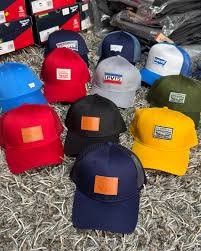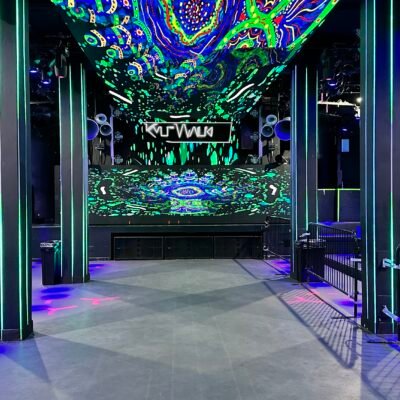For years, the humble gorra—or cap—was mostly seen as a practical item. People wore it to block the sun or hide a bad hair day. But in 2025, the gorra is more than just a cap. It has become a statement piece. Fashion experts, influencers, and everyday people are using gorras to express their personality, support causes, and stay ahead of fashion trends.
From baseball caps to flat brims, dad hats to trucker styles, gorras are suddenly everywhere. But why now? What changed? And what should you know before buying your next gorra?
Let’s break it down.
What Is a Gorra, Exactly?
A gorra is a type of hat with a visor or brim in the front. It is designed to protect the eyes from sunlight and is usually made of cotton, wool, or synthetic materials. Gorras come in many shapes and styles. Some are adjustable in the back, while others have a fitted design.
In English, most people refer to gorras as caps. But in Spanish-speaking cultures, the word “gorra” is more common, and it often carries cultural importance beyond just being an accessory.
The Unexpected Rise of the Gorra in Fashion

So, why is this simple cap trending again?
One reason is celebrity influence. Big names like Bad Bunny, Rihanna, and Messi have been seen wearing gorras in public and on social media. Their influence is strong, and fans want to copy the look.
Another reason is TikTok and Instagram fashion trends. A few years ago, the gorra was considered casual and boring. Now, it’s a cool part of streetwear outfits. TikTok creators have been sharing “gorra looks,” showing how to match caps with hoodies, sneakers, or even formal jackets.
Fashion brands have also caught on. Luxury names like Gucci, Balenciaga, and Off-White are designing expensive gorras with logos, unique stitching, or limited-edition prints. Suddenly, something that used to cost $10 is being sold for $300 or more.
Not Just Fashion — Gorras Send a Message
Today’s gorras are about more than style. Many people wear them to show support for a cause, a sports team, or even their own identity.
For example:
- Political movements use custom gorras to spread messages or slogans.
- Charities and fundraisers sell gorras to raise money and awareness.
- Cultural pride is also shown through caps featuring flags, traditional patterns, or local sayings.
There are even brands making eco-friendly gorras, using recycled plastic or organic cotton, aimed at buyers who care about the environment.
The “Dad Hat” Trend
One of the biggest surprises in the world of gorras is the return of the dad hat.
This soft, slightly curved-brim cap with a relaxed fit used to be seen as old-fashioned. It got its nickname because it looked like something your dad would wear to mow the lawn. But in recent years, dad hats have become a top seller.
Why? Comfort, nostalgia, and a “cool without trying” vibe.
Teenagers and young adults love the irony of wearing something that seems uncool—but somehow looks great. Paired with vintage t-shirts or oversized jeans, the dad hat has made a full comeback.
Gorras in Sports: Still Going Strong
Even with the rise of fashion gorras, their original home — sports — hasn’t changed.
Baseball players, tennis athletes, golfers, and race car drivers continue to wear gorras not only for function but for branding. Team logos, sponsor patches, and customized caps are part of every pro athlete’s uniform.
And fans follow suit. Whether you’re supporting the New York Yankees, FC Barcelona, or your local high school team, there’s probably a gorra out there for you.
Some limited-edition sports gorras have become collector’s items, selling online for hundreds of dollars.
How to Choose the Right Gorra
Thinking of buying a new gorra? Here are a few tips to make the best choice:
- Know Your Head Size
– Fitted caps come in different sizes. Measure your head before buying. - Adjustable vs. Fitted
– Adjustable gorras (with snaps or velcro) are easier to share or gift. - Fabric Matters
– Cotton is breathable for hot days. Wool is better for cooler seasons. - Brim Style
– Flat brims are trendy. Curved brims offer a more classic look. - Logo or No Logo?
– Some people prefer bold brand names or graphics. Others like plain styles for a cleaner look. - Color Matching
– Go for a neutral color if you want something that matches most outfits. Or go bold if you’re making a statement.
Gorras and Identity
Wearing a gorra can feel simple—but for many people, it’s a part of their identity.
In some Latin American communities, for example, a gorra can signal where you’re from, what you believe, or what kind of person you are. In urban culture, caps often carry deep meaning tied to music, sports, and even politics.
There are even debates over how you wear your gorra:
- Backwards? That’s a rebellious, casual vibe.
- Sideways? That’s old-school hip-hop.
- Perfectly straight? That’s often linked to serious collectors or sneakerheads.
Are Gorras Here to Stay?
Experts say yes.
As long as fashion remains flexible and open to new ideas, gorras will keep evolving. Their mix of function, culture, and self-expression makes them almost impossible to replace.
New technologies are also improving the gorra game. Some brands are testing smart fabrics, caps with built-in headphones, and even temperature control materials.
And for younger generations growing up on social media, a stylish gorra is a perfect way to top off an outfit — literally.
Final Thoughts
Gorras have always been around, but in 2025, they’ve become something much bigger. Whether you wear one to block the sun, show your team loyalty, or simply look cool on TikTok, the gorra is having a moment.
And this time, it might be here to stay.
So the next time you’re out shopping, don’t overlook that cap on the shelf. It could be the piece that transforms your entire look — and tells the world a little more about who you are.
The Wicked Book Series: How a Wicked Witch Cast a Spell on Readers Worldwide






